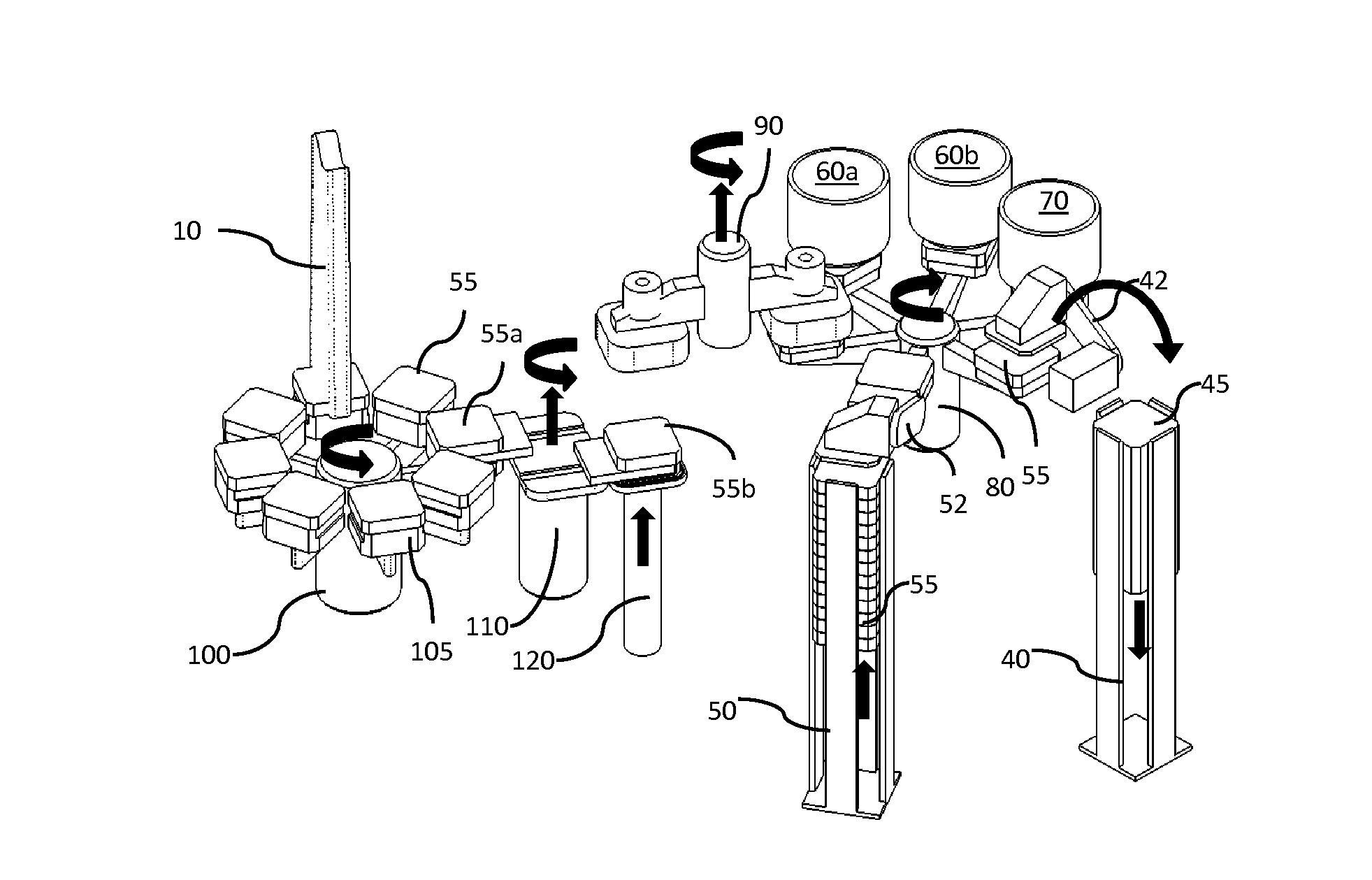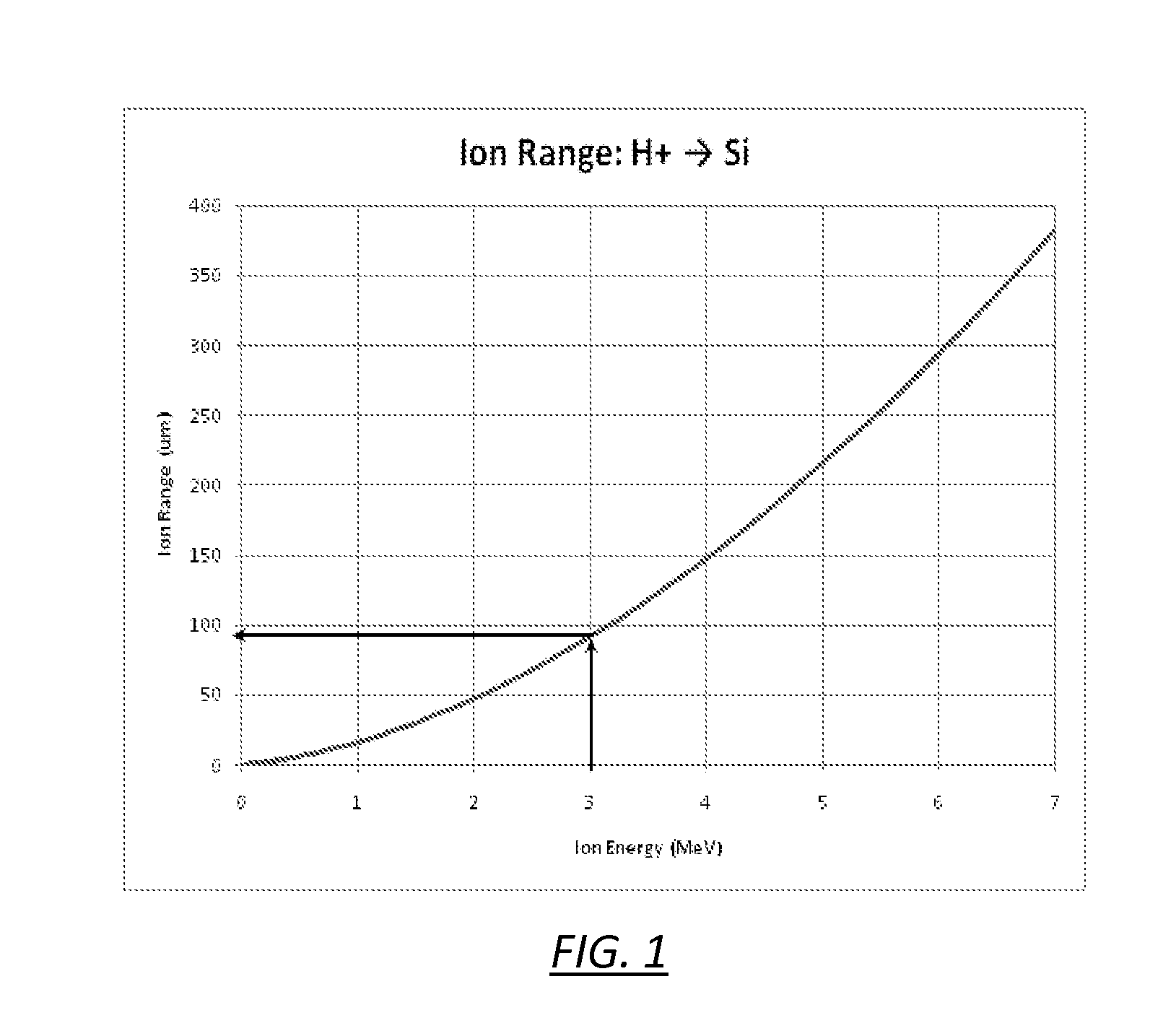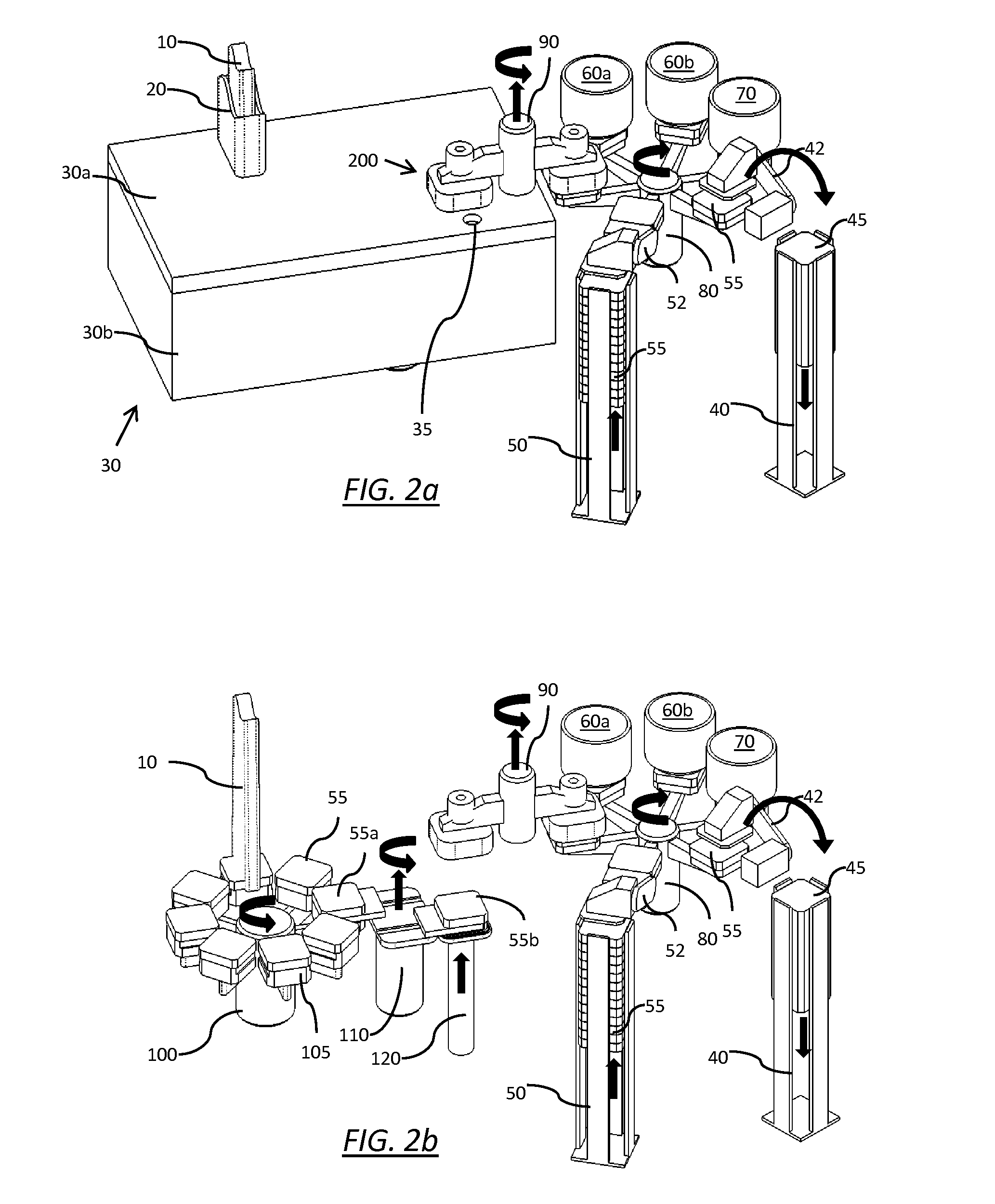Ion beam processing apparatus
a technology of ion beams and processing apparatuses, applied in the field of ion beam processing apparatuses, can solve the problems of reducing the crystal structure at the depth of the crystal structure, wasting silicon materials, and limited methods in terms of how thin slices can be cu
- Summary
- Abstract
- Description
- Claims
- Application Information
AI Technical Summary
Benefits of technology
Problems solved by technology
Method used
Image
Examples
Embodiment Construction
[0046]As discussed in the background section, FIG. 1 shows, for reference, a plot of the range of hydrogen ions in silicon as a function of ion energy. It is plotted from values produced by the publicly available ion simulation software SRIM.
[0047]FIGS. 2a and 2b show one preferred embodiment of the ion-cut processing system. FIGS. 2a and 2b are identical except FIG. 2b has the vacuum chamber hidden to show the internal elements. In these figures some elements and details such as support structures are not shown or are simplified for clarity. Referring to FIG. 2a, ion beam 10 enters the target vacuum chamber 30 via beam tube 20 which is coupled to an ion source, accelerator, and beam delivery and scanning optics (not shown), all of which are generally under vacuum. The target vacuum chamber 30 comprises a vacuum chamber cover 30a and vacuum chamber base 30b.
[0048]Referring now to FIG. 2b, with the target vacuum chamber 30 hidden to expose the internal features, a plurality of workp...
PUM
 Login to View More
Login to View More Abstract
Description
Claims
Application Information
 Login to View More
Login to View More - R&D
- Intellectual Property
- Life Sciences
- Materials
- Tech Scout
- Unparalleled Data Quality
- Higher Quality Content
- 60% Fewer Hallucinations
Browse by: Latest US Patents, China's latest patents, Technical Efficacy Thesaurus, Application Domain, Technology Topic, Popular Technical Reports.
© 2025 PatSnap. All rights reserved.Legal|Privacy policy|Modern Slavery Act Transparency Statement|Sitemap|About US| Contact US: help@patsnap.com



